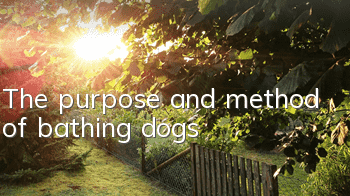Basic techniques for training dogs
Dog training is divided into three steps
First of all, the dog’s conditioned reflex should be cultivated in a quiet place with little external interference.
Secondly, the dog's conditioned reflex should be gradually complicated, that is, to strengthen the dog's ability to continuously adapt to new environments.
Finally, in a complex environment, the dog can still execute the command every time a tempting stimulus signal appears.
In order for the dog to successfully master the skills taught, dog trainers should use certain methods and means to reward diligence and punish laziness, and cultivate the dog's initiative, so that the trained dog can truly become successful.
Food stimulation method
That is to say, food is used to stimulate the trained dog to complete the prescribed actions. Food stimulation can be used as a means of induction because food can stimulate a dog's nervous system to stimulate their appetite, especially their favorite food. This method can effectively make the trained dog actively participate in the training and quickly complete the training subjects.
Food stimulation method can also be used as a means of encouragement. When the trained dog has completed the specified action well, in order to consolidate the conditioned reflex, it can be given its favorite food as a reward.
Food stimulation can also be used as a means of relief. When the trained dog completes the prescribed actions under strong mechanical stimulation, in order to relieve the trained dog's nerves and enhance its dependence on people, some food can be fed.
Since the food stimulation method is active and the trained dog is willing to accept it, the dog's actions are naturally active and the nerves are in an excited state. However, this method also has its own limitations, that is, it cannot completely guarantee that the dog will follow human instructions. If used incorrectly, it can lead to a food dependence on the dog, causing it to have a food that meets its instructions.
Mechanical stimulation method
Mechanical stimulation method is a method that uses machinery, such as leather ropes and dog leashes, to force the trained dog to make a certain response.
This method can be used as a means of coercion. For example, when going out, some dogs like to run across the front of their owners, while other dogs look left and right and jump behind their owners. In order to control these two types of dogs, the owner or dog trainer must put a leash on the dog. Or a rope to control it by its side so that it can neither get ahead nor fall behind.
Mechanical stimulation can also be used as a means of prohibition. If you want to stop the dog from doing something or not doing something, while issuing the stop command, use coercive means to cooperate. This method is most effective and timely when dogs are trained to bite passers-by, pick up food, or hunt poultry.
Mechanical stimulation can also punish dogs. If the trained dog makes repeated mistakes, severe criticism is ineffective, and the owner's authority is ignored, mechanical stimulation must be used for education. This method is often very effective in correcting defects in adult dogs.
Because of mechanical thornsThe stimulation method is an external, simple method, which is relatively blunt. Therefore, when using it, attention should be paid to the appropriate intensity. It should be treated separately according to the characteristics of the dog being trained, especially for young dogs. If the stimulation is too strong, the dog's excited nerves will be affected. Inhibition affects the training effect and also easily affects the dog's dependence on people. Therefore, in order to ease the dog's nervous state and consolidate conditioned reflexes, this method is often used in conjunction with rewards and other means.
Imitation training method
It is a training method that uses the behavior of well-trained and well-educated dogs to influence or drive the trained dogs.
This type of method is often used on dogs when they have not yet grown up, because they are in the transitional stage of growth and development and are most susceptible to the influence of their "people". The behaviors of other dogs often become the targets of their active imitation. Of course, the selection of adult dogs must be excellent dogs that can occupy a dominant position and set an example, otherwise this method will be very difficult to be effective.
Using the combination of rewards and punishments
The combination of rewards and punishments is a method that combines mechanical stimulation with food stimulation and massage. It is also a kind of verbal praise similar to food stimulation. A popular saying is "pat and rub three times." This method not only allows the dog to know what not to do, but also what to do, with clear rewards and punishments, and the best effect.
The best time to train a dog
When the dog reaches 3 to 4 months old, you can start training it with some simple things. If you use your nose to sniff and use your mouth to hold things, etc. The raising and training of a dog before it is one year old determines the future of the dog. Therefore, dog education and training should start as early as possible. Education and learning to develop various good habits are the prerequisites for future training.
Dogs are animals that develop very quickly. Dogs can generally help humans with work within a few months of their birth. But don't let the dog engage in too difficult work too early, and don't test the dog's skills, ferocity and fighting desire too early. This will make the dog develop the bad habit of being disobedient and biting wildly. When a dog reaches about 15 months of age, it should be trained in stages to increase its ferocity and increase its desire to fight.








